The Gray Market
How Hunter Biden’s Ethics Agreement Sets a Dangerous Precedent for Rising Artists (and Other Insights)
Our columnist thinks through the curious ethics agreement between the presidential progeny’s gallery and the White House.
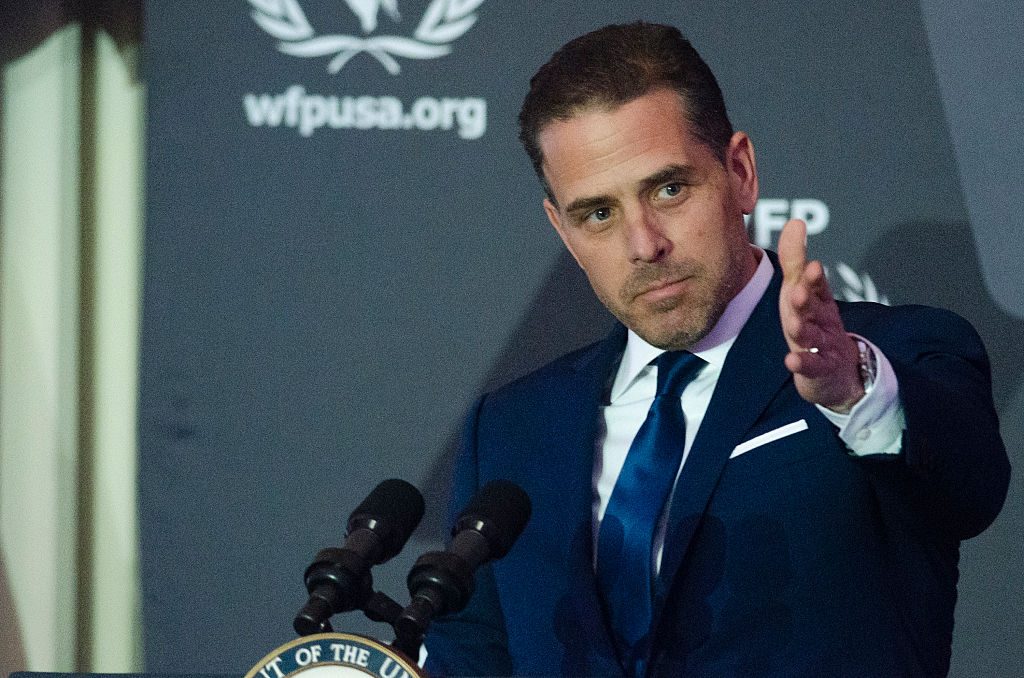
Our columnist thinks through the curious ethics agreement between the presidential progeny’s gallery and the White House.

Every Wednesday morning, Artnet News brings you The Gray Market. The column decodes important stories from the previous week—and offers unparalleled insight into the inner workings of the art industry in the process.
This week, thinking through art-market politics in every sense…
Last Thursday, the Washington Post reported that Georges Bergès Gallery, the dealership at the center of presidential progeny Hunter Biden’s blossoming art career, had finalized an ethics agreement with the White House meant to keep all parties free and clear of potential influence-peddling (and its suspicion). But while the conversation so far has fixated on how the pact could harm the Biden administration politically, it also raises valuable questions about how adhering to such a curious arrangement could impact the long-term trajectory of any aspiring artist.
As of my writing, the exact terms of the agreement remain a mystery. Georges Bergès Gallery has so far declined to answer press inquiries about the pact (including my own) on the record, and to my knowledge, no journalist has secured a copy of the document itself by other means. (My email to Hunter’s attorney also went unanswered.)
However, Matt Viser of the Post managed to talk to two anonymous “officials familiar with” the arrangement. He writes that under the agreement, “purchases of Hunter Biden’s artwork… will be kept confidential from even the artist himself,” and that the gallery “will withhold all records” from him, “including potential bidders and final buyers.”
The idea seems to be that what Hunter doesn’t know about his collectors can’t hurt his family. How could an individual, a corporation, or a government buy its way into the Bidens’ good graces through Hunter’s artwork if the Bidens stay blind, deaf, and dumb to who is doing the buying?
The other key tenet, Viser relays, is that Bergès has “agreed to reject any offer that he deems suspicious or that comes in over the asking price,” making it even more difficult for would-be bad actors to use Hunter’s work as a passageway to political favor, at least on paper.
If you feel a little lightheaded after reading this far, I don’t blame you. None of the art-industry veterans I’ve spoken to about the Biden agreement since last Friday has ever heard of anything like this agreement. For example, the New York-based art attorney Donn Zaretsky told me he would be “surprised if there are any remotely close precedents” in gallery history. I certainly couldn’t find any myself, and longtime readers know I love few things more than being able to reprise my role as the “Well, Actually” Guy about the art market’s past.
I mention this because it implies that not even the people who drew up this agreement have any direct comparables for how it might work in practice. Sure, plenty of presidential children have had careers before, including (as the Post mentions) at least one in another branch of the arts, aspiring postwar vocalist Margaret Truman.
But it appears that no scion of note—and in fact, no one at all—has tried to do this precise thing in this precise industry in the entire lifespan of the republic. The experiment in art and democracy will kick off when the gallery opens a closed-door viewing of the pieces in Los Angeles sometime this autumn, with a public exhibition slated to premier in New York afterwards.
With veteran political reporters and ethics watchdogs concentrating on the agreement’s implications for the U.S. executive branch, I think it’s more useful for me to examine how it affects Hunter Biden as an artist very early in what he hopes will be a long career. From that standpoint, I’m not sure the arrangement is any more beneficial for him than it is for his dad’s administration.
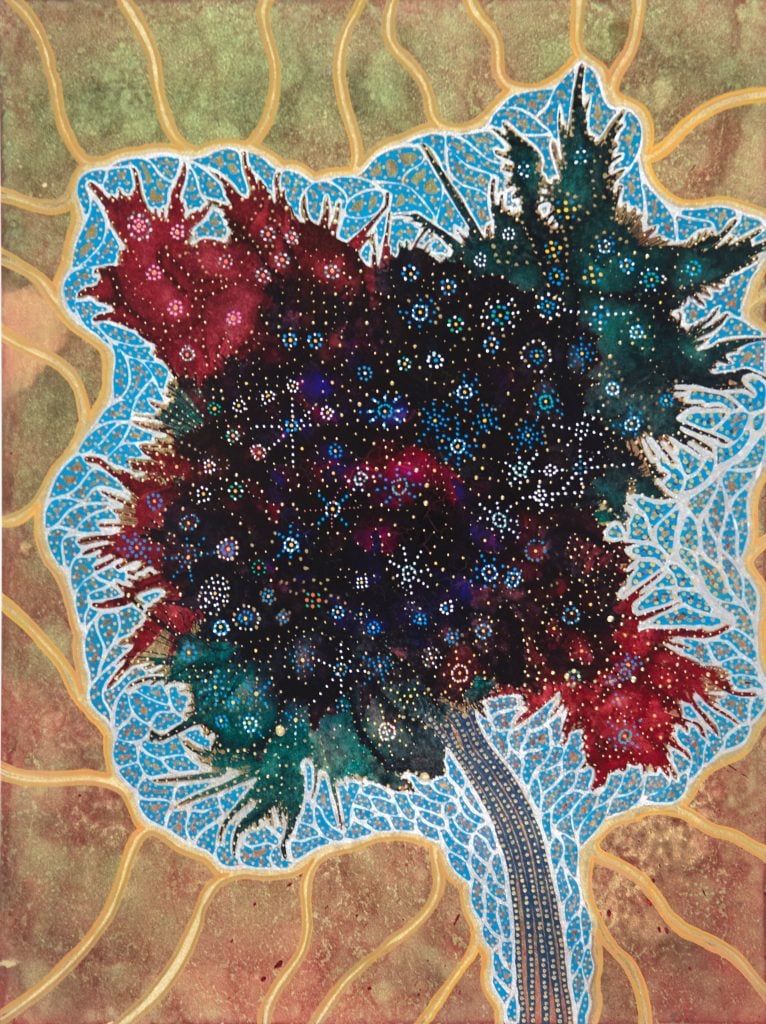
Hunter Biden, 019 (2020). Courtesy of the artist and Georges Bergès Gallery.
With so little transparency from the parties involved in this agreement, let’s ground this inquiry by bulleting through the few details the Post received directly from the anonymous officials familiar with it, starting here:
This verbiage is, frankly, bizarre if taken literally. Why are we talking about “potential bidders” in a gallery-sector context, for instance? More importantly, Bergès cannot genuinely withhold all records of sales from Hunter. An artist must be able to learn when their works have been sold by their dealer, and for how much, so they can know what they are owed and (roughly) when they will be paid. Otherwise, how could they verify they were being compensated appropriately? How would they report their income or pay their taxes? Blockading this info wouldn’t just be unethical; it would be illegal.
The most reasonable conclusion is that what will be partitioned from Hunter are only the identities of the actual buyers of his works, as well as any other parties who so much as make casual sales inquiries (the latter being my interpretation of “potential bidders”). That would at least be lawful and achievable on paper.
Yet such a formulation would also disadvantage any artist operating under it, according to Independent art fair founder, longtime dealer, and John Giorno Foundation director Elizabeth Dee.
What even many people around the art space don’t understand, Dee says, is that price performance isn’t the only reason gallerists often chafe against their living artists’ works being sold at auction. Since neither auction houses nor the buyers themselves have an obligation to reveal who acquired the piece, the artist and their gallery may “lose the provenance forever” when a piece goes under the hammer.
“That doesn’t feel important to people when an artist is beginning their career, but it’s incredibly important over time,” Dee explains.
Fast forward to an artist attempting to reassemble a past body of work for, say, an upcoming museum exhibition. How would they know who to contact with the loan request for the show? Or imagine the artist’s studio is trying to compile a monograph or catalogue raisonné. It’s possible they’ll never be able to recover the information they need regarding certain pieces’ post-auction ownership histories or current whereabouts.
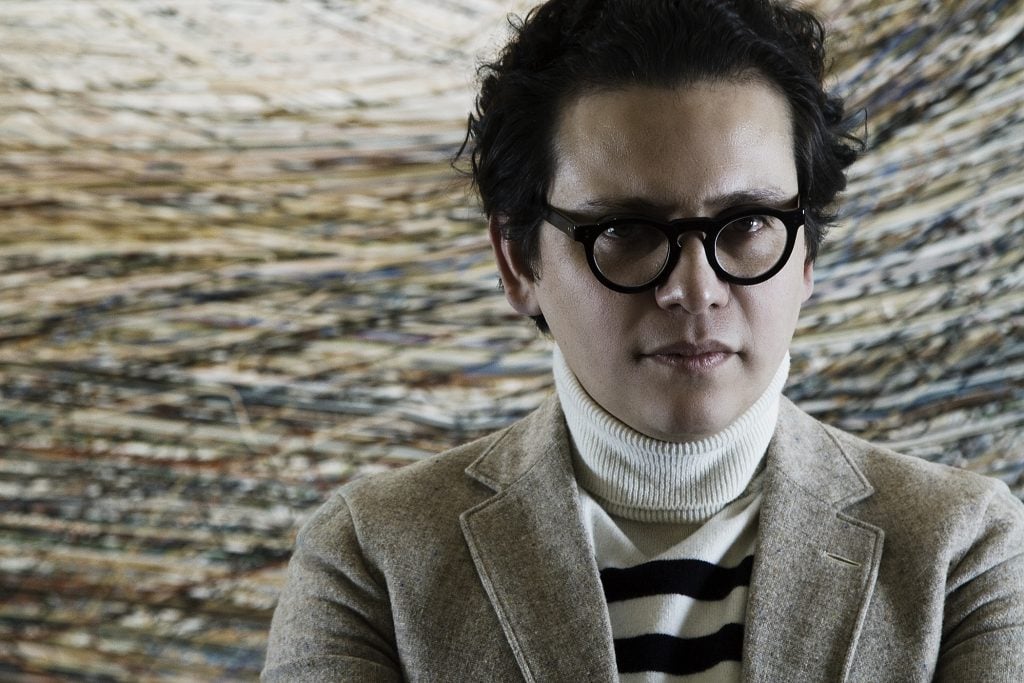
Georges Bergès, who represents Biden.
Even though Hunter Biden’s work is being sold privately, the gallery’s ethics agreement seems to expose him to this same risk. (It also leaves unanswered what happens with the sequestered information if Bergès and Hunter ever stop working together.) At the same time, Dee also feels the pact is less able to “create a true wall between” the consignor and the buyer than a sale at auction. This is part of the reason regulations require U.S. museums to deaccession artworks under the hammer: the certainty of genuine arm’s length transactions.
If the White House decided that the safest approach for the president and his son would be to blockade Hunter from all information about end buyers’ identities, a cleaner solution would have been for him to sell all the works directly to Bergès up front at agreed-upon prices.
That would obviously have required the dealer to raise significant capital, but it would have ensured clear and immediate title transfer at the start of the relationship to a single party whose financial ties could have been fully vetted for ethical complications by the White House. Afterward, Bergès would be free and clear to resell the works for whatever markup he could secure, and any potentially unsavory overpays would in no way benefit Hunter himself.
Although it’s unusual today, such an artist-to-dealer arrangement would also have precedents that stretch back about 125 years, from Pere Manyac’s deal with a young Pablo Picasso, to Peggy Guggenheim’s deal with a young Jackson Pollock, to Stefan Simchowitz’s various deals with aspiring artists in the 2010s. I’m not suggesting this kind of structure raises zero questions about artist’s rights, but I’d argue it’s far less murky from a government-ethics standpoint than what the Bidens have now. It also would have been undeniably better for Hunter himself (or any other artist in his position) since it would have meant guaranteed income now instead of potential income later.

Hunter Biden, St. Thomas (2020). Courtesy of the artist and Georges Bergès Gallery.
All of this leads us to the second known element of the ethics agreement:
It’s not at all clear what mechanisms will be used to judge whether an incoming offer qualifies as “suspicious.” Does Bergès himself maintain sole discretion over this calculus? If so, that seems like a fraught proposition.
Case in point, the dealer previously told my colleague Katya Kazakina that he will set Hunter’s prices at $75,000 for works on paper and up to $500,000 for large paintings. Those are colossal prices for an artist’s first solo exhibition—so high, in fact, that a buyer wouldn’t need to come in over the asking price for the transaction to smell fishy to some people inside and outside the art world. Simply meeting the asking price would be enough.
At the same time, it’s also crucial to distinguish between celebrity-based opportunism and politically motivated grifting. It’s self-evident that Hunter’s work does not merit prices of $75,000 to $500,000 based on the traditional value system of the art establishment. But artists with no pre-existing art-industry profile sell for prices in this range all the time! Just look at what’s been happening among top sellers in the NFT market for the past 10 months or so.
Sure, you can argue that Beeple’s work didn’t “merit” selling for $69.3 million at Christie’s, or that a work by Edward Snowden didn’t “deserve” to sell for $5.4 million on Foundation. It’s just that you can only make that argument from either a position of elitism, or a position of ignorance about the way the art and collectibles markets actually work in 2021.
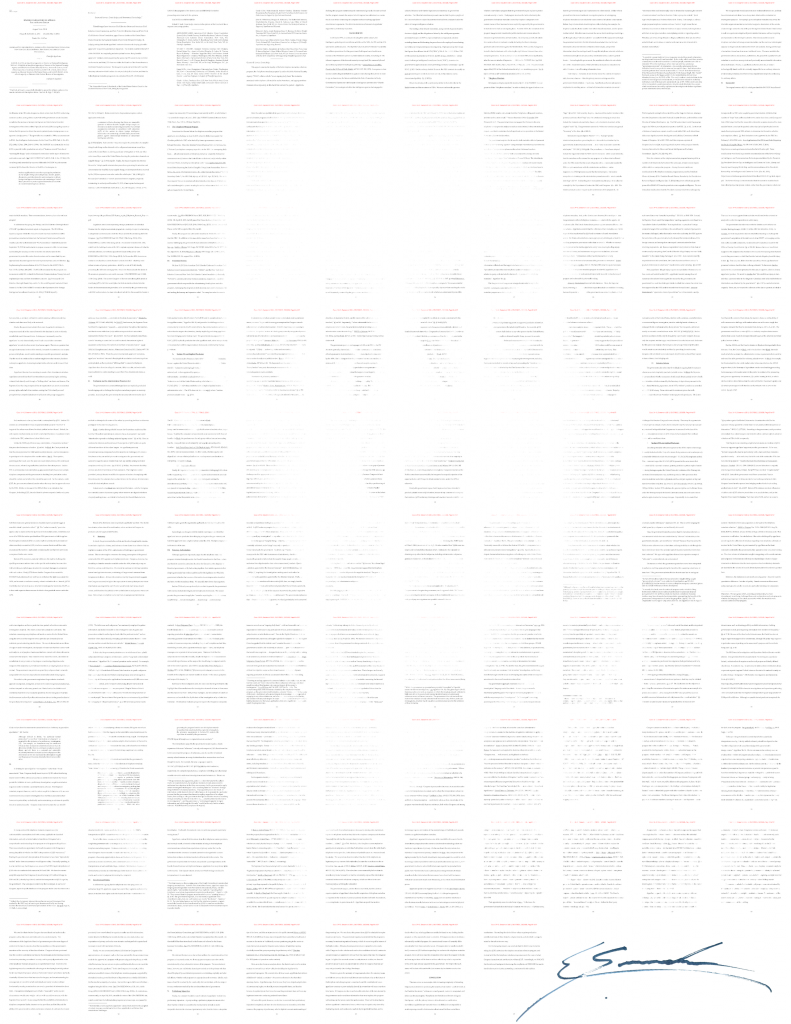
Edward Snowden, Stay Free (Edward Snowden). Courtesy of the artist.
The first stance hinges on the belief that the art world’s arcane, often self-aggrandizing standards are the only ones that should be used to value artistic production. The second stance (which I’ve seen a lot of Washington pundits and political operatives adopt) hinges on the naivete that what drives value in these spaces are academic training, pure technical virtuosity, and objectively agreed-upon benchmarks of aesthetic quality.
Both stances refuse to acknowledge that financial speculation and wider pop-cultural relevance have been vital influences on how much a set of wealthy buyers is willing to pay for an artwork for many years. Based on his lineage and dramatic life story, Hunter Biden checks each box. I think that fact could make Bergès’s stated prices attractive to legitimate buyers who have no intention of currying political favor through the purchase.
Even if the work sells this year, however, the prices could be a problem for Hunter’s career over the longer term. One of the enduring oddities of the primary art market is that dealers are supposed to ensure that prices for an artist’s new work modestly increase (or at least hold steady) with each successive show. Descending prices register as poor form and, more importantly, a negative indicator about the artist’s trajectory.
If Hunter’s first exhibition asks collectors to pay $75,000 to $500,000 per piece, how realistic is it to observe this model over time? His status as the son of the sitting president is undeniably driving some amount of interest in his work right now. But Joe Biden will be out of office in somewhere between two and a half and six and a half years.
How strong a hold will Hunter have over pop culture and the media cycle when his father is just another ex-president? What will that transition do to demand for Hunter’s work? Even if he can secure half a million dollars for a large painting this fall, will he be able to get, say, $700,000 in 2024 or $1 million in 2028 regardless of the outcome of the corresponding presidential election?
Maybe! I also recognize that thousands upon thousands of artists would love to have this problem. But lofty initial prices create a lot of pressure for rising talent to process and overcome… and few manage to do it.
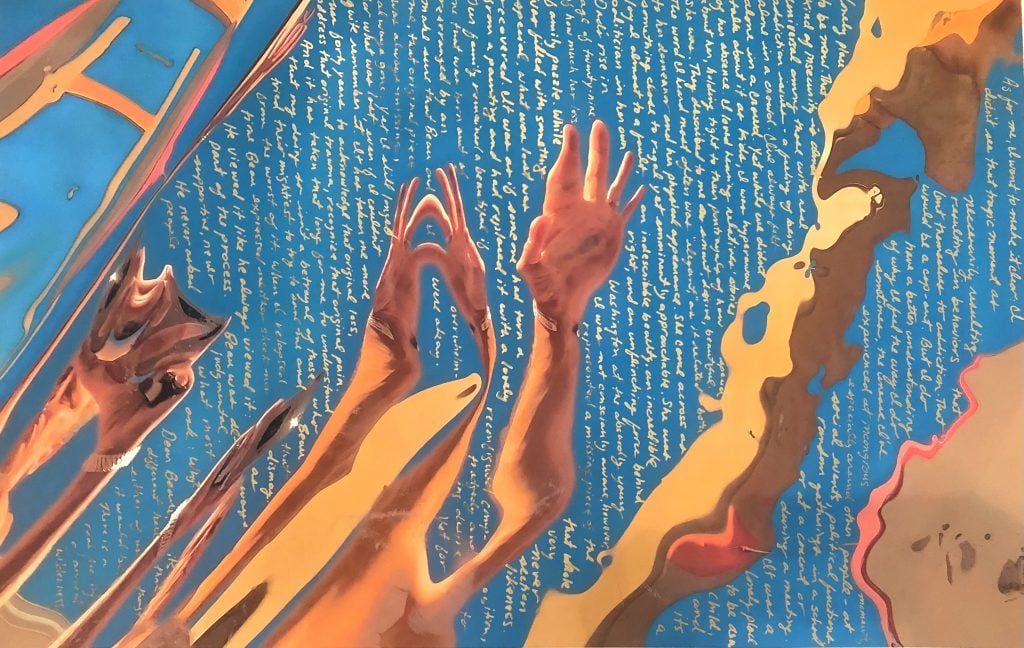
Hunter Biden, Untitled (2021). Courtesy of the artist and Georges Bergès Gallery.
Looming over this entire debate is the assumption that the art market is uniquely susceptible to grifters and dark dealings. The Washington Post typifies this belief by writing that Hunter’s “latest vocation is in a field where works do not have a tangible fixed value and where concerns have arisen about secretive buyers and undisclosed sums.”
This is true on one level. Artwork has no fundamentals, and thus no quantitative basis for its pricing. It holds no assets or liabilities, and it generates no revenue (let alone profit) until it’s resold.
Yet if we’re being real, any good or service of any kind is ultimately worth whatever a buyer will agree to pay for it. Even fundamentals are only ever a guide—and one that is frequently disregarded by buyers in a slew of different industries.
That explains the first question anyone ever asks—did they overpay?—when one company acquires another, a pro sports club signs a rising-star player, a plutocrat buys a multimillion-dollar penthouse, or almost any other newsmaking transaction takes place in any realm of commerce.
If you personally believe a buyer went too high, then it’s rarely difficult to construct an argument that it was due to stupidity or corruption.
Is the art market dramatically shadier in this regard than, say, real estate, the chosen vocation of the former president and his son-in-law? I don’t think it takes an imagination on the level of Orwell or Tolkien to argue it is not. As ethics watchdogs remember, Trump himself somewhat mysteriously managed to flip a Palm Beach condo he’d bought for $41 million in 2004 to a buyer for $95 million in the depths of the 2008 financial crisis. (The buyer, of course, was Russian oligarch and one-time Salvator Mundi owner Dmitry Rybolovlev.)
The oligarch’s ex-wife claimed through her attorney that he bought the property in cash without an inspection. Factoring in property taxes, upkeep, and the subsequent sale of two of the three parcels of land the estate was subdivided into, the Palm Beach Daily News estimated in 2019 that Rybolovlev would take a loss on the purchase “unless and until something big happens on” the third parcel.
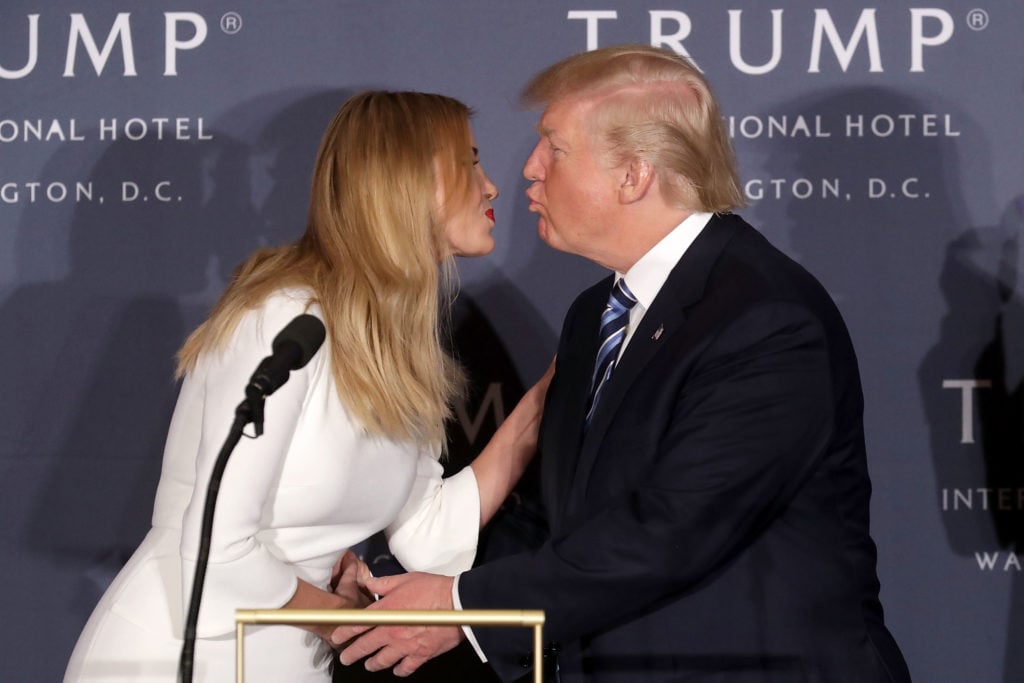
Donald Trump and his daughter Ivanka Trump kiss after speaking during the grand opening of the new Trump International Hotel October 26, 2016 in Washington, DC. Courtesy of Chip Somodevilla/Getty Images.
However, this deal became a part of special counsel Robert Mueller’s multiyear investigation of Trump’s finances and business dealings… and apparently provided no prosecutable evidence of wrongdoing. If you still believe Trump is a Russian asset, that outcome suggests real estate could be at least as effective a vehicle for influence-peddling as contemporary art. If you don’t believe the Manchurian Candidate theory, then the outcome reinforces that seemingly suspicious transactions involving public figures can just be plain-old bad business.
We could play this game with any industry. If Margaret Truman were the First Daughter in 2021, couldn’t LiveNation have awarded her an “undeserved” multimillion-dollar touring contract if the company were run by a mustache-twirling villain in pursuit of presidential influence? Couldn’t Billy Carter have gotten scandalously good licensing or distribution deals for his line of Billy Beer if his brother Jimmy were in office today? What should we make of the fact that Ivanka Trump and Jared Kushner reported at least $172 million in outside income from their various businesses from 2016 through 2020?
The point: Every business sector can be exploited with enough effort, but the possibility (and even the appearance) of impropriety does not prove impropriety.
Still, this leaves Hunter Biden’s ethics agreement as the worst of all possible worlds: unsatisfying to multiple government ethics experts, and (in combination with reported pricing) disadvantageous to an early-stage artist hoping to build a long career. I hope it works out for Hunter nonetheless. But either way, other artists can learn from it.
That’s all for this week. ‘Til next time, remember: the right thing is almost always the hardest thing to do.